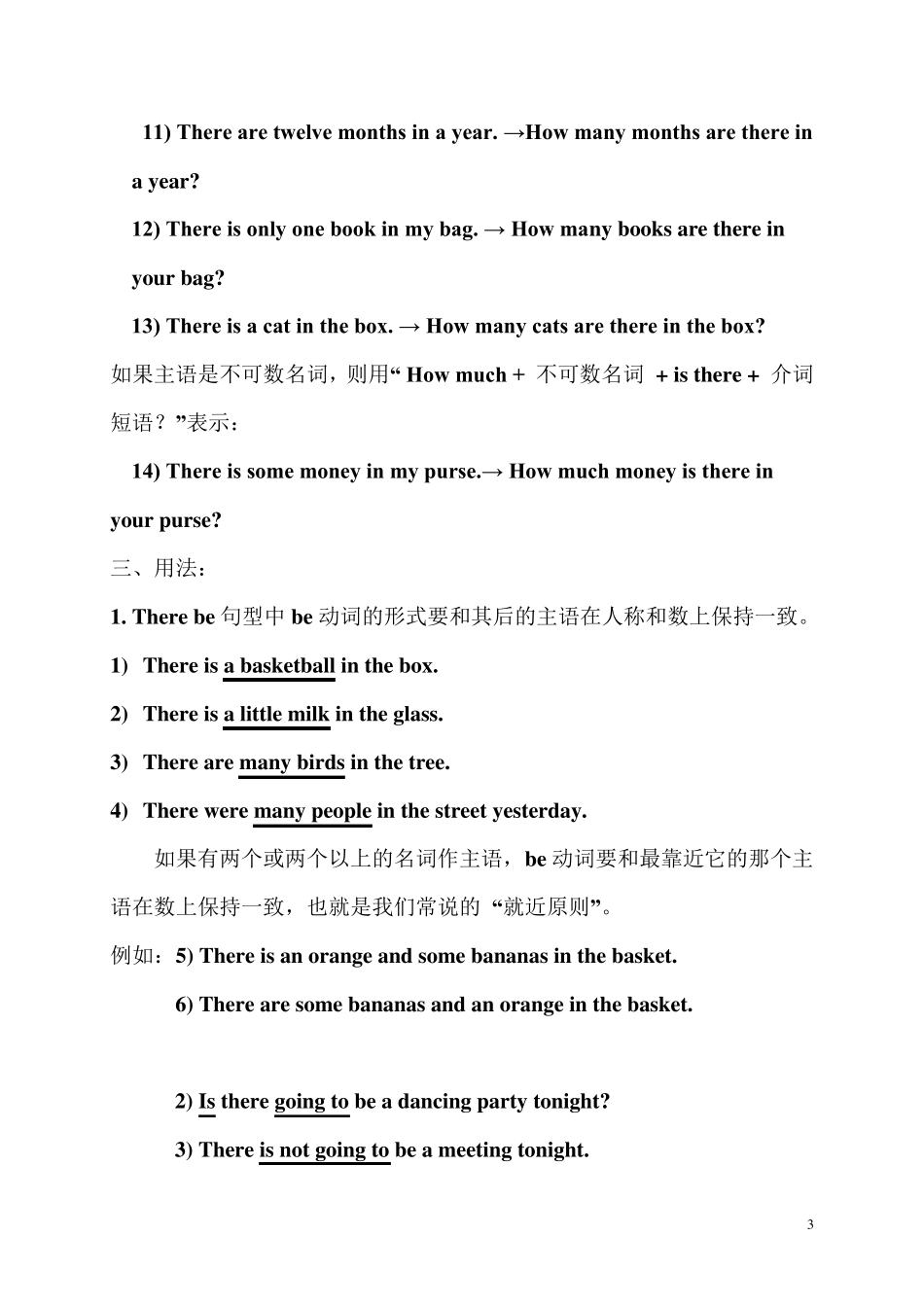1 There be 句型 There be 句型 一、构成:There be ...句型表示的是 “某处有(存在)某人或某物”,其结构为 There be(is,are,was, were )+名词+地点状语。例如: 1) There are fifty-two students in our class. 2) There is a pencil in my pencil-case. 3) There is an old house by the river . 二、各种句式: 否定句:在 be 后加上“not”,也可用“no”来表示。即:no + n.(名词)= not a\an\any + n.(名词)。 例如:1)There is an orange in her bag. →There isn’t an orange in her bag. →There is no orange in her bag. 2) There are some oranges in her bag. →There aren’t any oranges in her bag. →There are no oranges in her bag. 3)There is some juice in the bottle. →There isn’t any juice in the bottle. →There is no juice in the bottle. 一般疑问句:There be 结构的一般疑问句变化只需把 be 动词移到句首,再在句尾加上问号即可。 2 例如:4) There is some money in her handbag. → Is there any money in her handbag? (疑问句和否定句中,some 改为any, something 改为anything.) 5) There is something new in today’s newspaper.→Is there anything new in today’s newspaper? 特殊疑问句:There be 句型的特殊疑问句有以下三种形式 ① 对主语提问:当主语是人时,用 “ Who’s + 介词短语?” ;当主语是物时,用 “ What’s + 介词短语?” 。其中there 在口语中常常省略。注意:无论原句的主语是单数还是复数,对其提问时一般都用 be 的单数(be)形式(回答时却要根据实际情况来决定)。 如: 6) There is a bird in the tree. →What’s in the tree? 7) There are some bikes over there.→What’s over there? 8) There is a little girl in the room.→Who is in the room? ② 对地点状语提问:用 “ Where is \ are + 主语?” 表示(注意其答语变化): 例如: 9) There is a computer in my office. → Where is the computer? ----It’s in my office. 10) There are four children in the classroom. →Where are the f...


